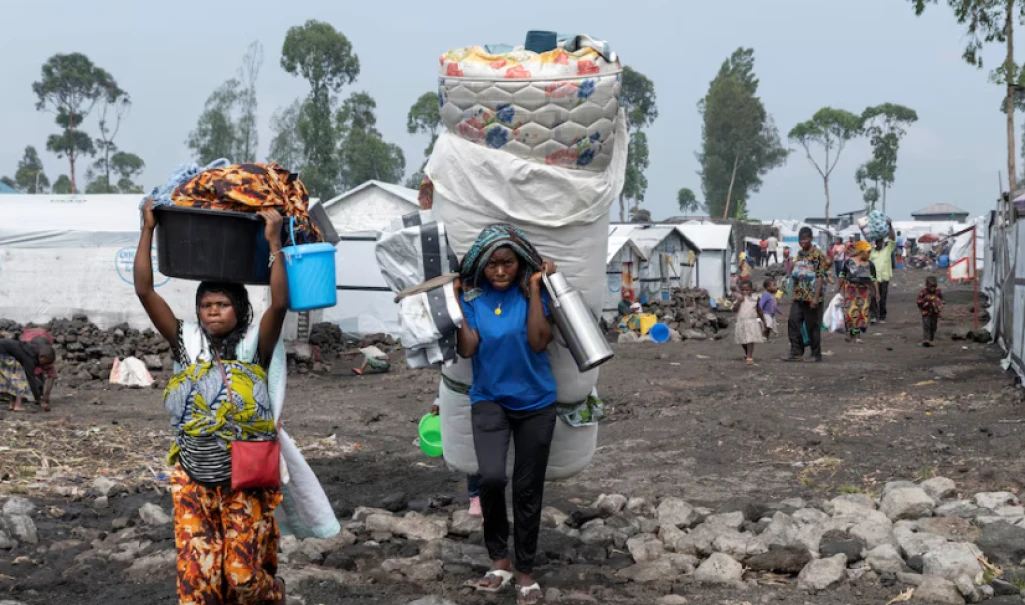
Laden with
just the possessions they can carry, thousands of displaced people have reached
the outskirts of the city of Goma in eastern Democratic Republic of Congo,
fleeing a rapid M23 rebel advance that has taken more territory than ever
before.
The advance
marks a turning point for the M23 since it launched a fresh insurgency into
Congo's mineral-rich east in March 2022, analysts say.
They never
managed to gain this much ground during previous offensives in 2012 and 2013
and the more territory they take, the more opportunity there is for them to
generate more mining revenue to fund their campaign, analysts say.
The M23 is
the latest in a series of groups of ethnic Tutsi-led insurgents to rise up
against Congolese forces. The group, named after the March 23 date of a 2009
accord that ended a previous Tutsi-led revolt, accuses the government of not
living up to the peace deal to fully integrate Congolese Tutsis into the army
and administration.
There are
more than 8,000 M23 fighters, of which around 5,500 have been recruited since
September, according to a U.N. experts' report published this month.
Congo,
Western powers and the United Nations accuse neighbouring Rwanda of backing the
group with its own troops and weapons. Rwanda denies this.
After seizing
the town of Minova on Tuesday, M23 fighters have continued their
offensive, moving into the town of Sake, around 20 km (12 miles) from Goma. A
local administrator and the head of a civil society group said there were
clashes with the army on Thursday morning.
This
self-flying cargo drone is designed to reach even the most challenging
terrains.
"We used
to hear about the war from very far away," said Alice Maombi Tulinado, 28,
a mother of four from Kalehe territory, who arrived on a river boat in Nzulo,
around 15 km (9 miles) from Goma, the lake-facing capital of North Kivu
province.
"We did
not see the war coming upon us. Now it is in our homes," she said as she
joined thousands of others already living in a makeshift camp there.
Minova is
around 40 km (25 miles) from Goma, a city of 2 million people including over a
million displaced.
"The
capture of Minova isolates Goma a little more and opens the way to the capture
of other localities ... important trade flows and mines," said Fred Bauma,
head of a Congolese research group.
Congo's army,
which has been locked in fighting against the M23 for almost three years, has
so far only said that "the enemy has broken through" in Minova. The
national army spokesman did not respond to requests for comment about the
situation in Sake on Thursday.
Mining
revenue
The M23 has
been in control of the coltan-mining region of Rubaya - a mineral vital for manufacturing
electronics - for over a year. This has allowed them to generate an estimated
$800,000 per month through a production tax, according to the U.N.
The group has
spread into new territories in recent weeks where there is scope to generate
more mining revenue, analysts say. Numbi, an eastern mining area rich in gold,
tourmaline, and tin, tantalum and tungsten - so-called 3T minerals used in
computers and mobile phones - is also under threat.
The M23
briefly managed to take over Goma in 2012, prompting international donors to
cut aid to Rwanda. Even then the rebels did not hold as much ground as they do
now.
However,
Jason Stearns, a U.S.-based university professor and former U.N. expert, said
Rwanda was probably not willing to risk a stronger international backlash and
more aid cuts if the M23 tried to take Goma again and push further south into
Bukavu, the capital of the adjacent South Kivu province.
But he said
efforts by Angola to mediate a lasting ceasefire and de-escalate tensions
between Congo and Rwanda were at an impasse.
"The
next move has to be on the battlefield, which is why we have seen this
escalation in recent weeks and the dramatic expansion of M23 territory,"
Stearns said.
On Tuesday,
Congo's army lined up heavy weapons on a stretch of land a few hundred metres
from the Nzulo camp.
The
provincial governor has since temporarily banned all small boats from crossing
Lake Kivu, which separates Minova and Goma.
Faced with
lack of food and fearing more fighting, several families have packed up once
again and walked towards Goma.
"I am too hungry. The situation in Nzulo is not good either," said Minova resident Athanase Zihalirwa Muderwa, balancing a sleepy child on his shoulders. "I don't know where I am going."